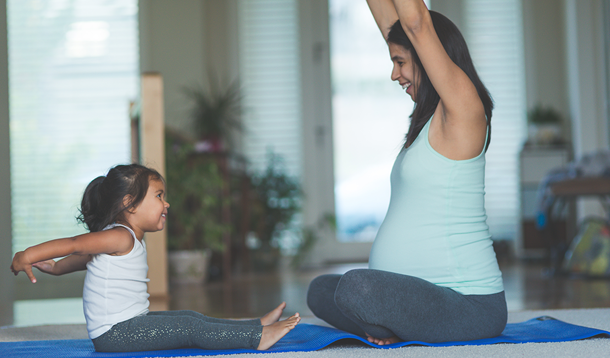
The dragon sat curled up in my lap. Although you might have expected to hear a roar emerge, instead, a small voice sang, “Namaste to everyone, let the light shine through.”
The ‘dragon’ (a.k.a. my 3 year old son) was sitting in the middle of a sea of Cheerios he had just dumped out mid-meltdown. I scooped him up to help him through his big feelings. The song- taught to him by a favourite teacher - was one of our favourite things to sing together, and for some reason, he’d always had a thing about singing it while wearing his favourite Halloween costume.
It makes me all kinds of happy that my kiddos will let me hold them when they’re hurting — because it means more than just wonderful hugs. According to Diana Divecha, Ph.D., a developmental psychologist and affiliate of the Yale Center for Emotional Intelligence, “Children who have secure attachments tend to be happier, kinder, more socially competent, and more trusting of others, and they have better relations with parents, siblings, and friends. They do better in school, stay physically healthier, and create more fulfilling relationships as adults.”
So what does this have to do with yoga?
On the surface, not much. Yoga was developed as an individual practice — the origins of yoga are storied and complex, but this is a common thread. Many cultures throughout history have used yoga as a way for individuals to increase consciousness and health.
Contemporary evidence supports many of these same benefits of yoga in the areas of mental health and wellness. Harvard Medical School reports that having a yoga practice can reduce stress and anxiety, regulate the body’s response to pain, and can offer a self-soothing modality for those dealing with stress. There is also compelling research emerging about yoga’s capacity to help individuals through PTSD, and complex and treatment-resistant trauma.
All these awesome benefits have caused yoga to explode into all kinds of diverse contexts, such as a treatment for eating disorders, to assist social and political reconciliation, and to support street-affiliated youth. And then there’s goat yoga, but we won’t talk about that.
It’s no wonder family yoga classes are gaining in popularity. You can even buy tiny yoga outfits for your littles (cuuuuuuuute). But the real power of yoga is not the classes or the clothes — it’s the fact that it can help families create spaces in their day for connection, attunement, emotional regulation, and shared experience. Yoga can help families strengthen bonds.
As a family yoga teacher and parent of two rowdy, endearing and ridiculous kiddos, I’m an accidental expert on the importance of connection amidst chaos. My family weaves yoga into our days in mostly unstructured ways — we do also try to make time for some more structured practices, but my kids are 1.5 and 4, so we only get so far with that. I’m excited to share with you some of my favourite ways to invite the attachment-inducing power of yoga into your family life — no matter what kind of time you have available or how old your kids are.
An important reminder: turn the tech off! The only thing glowing should be your family’s smiles — not their screens.
Family yoga is a unique way to practice:
Tuning In:
Resources:
Remember that creating shared time and meaningful connection is the intention here. Sometimes your family might want fun acro poses, sometimes you all may want just to breathe together, sometimes you might have to do a bit of both and make space for others’ needs in the process. Ideally, yoga is not about forcing yourself or your family through a specific sequence, but rather about tuning into one another and yourselves.
You may want to consult a health professional before beginning any exercise regime. Any somatic practice has the potential to trigger those with trauma and other mental health concerns, so be sure to seek counselling support if this is the case for anyone in your family.